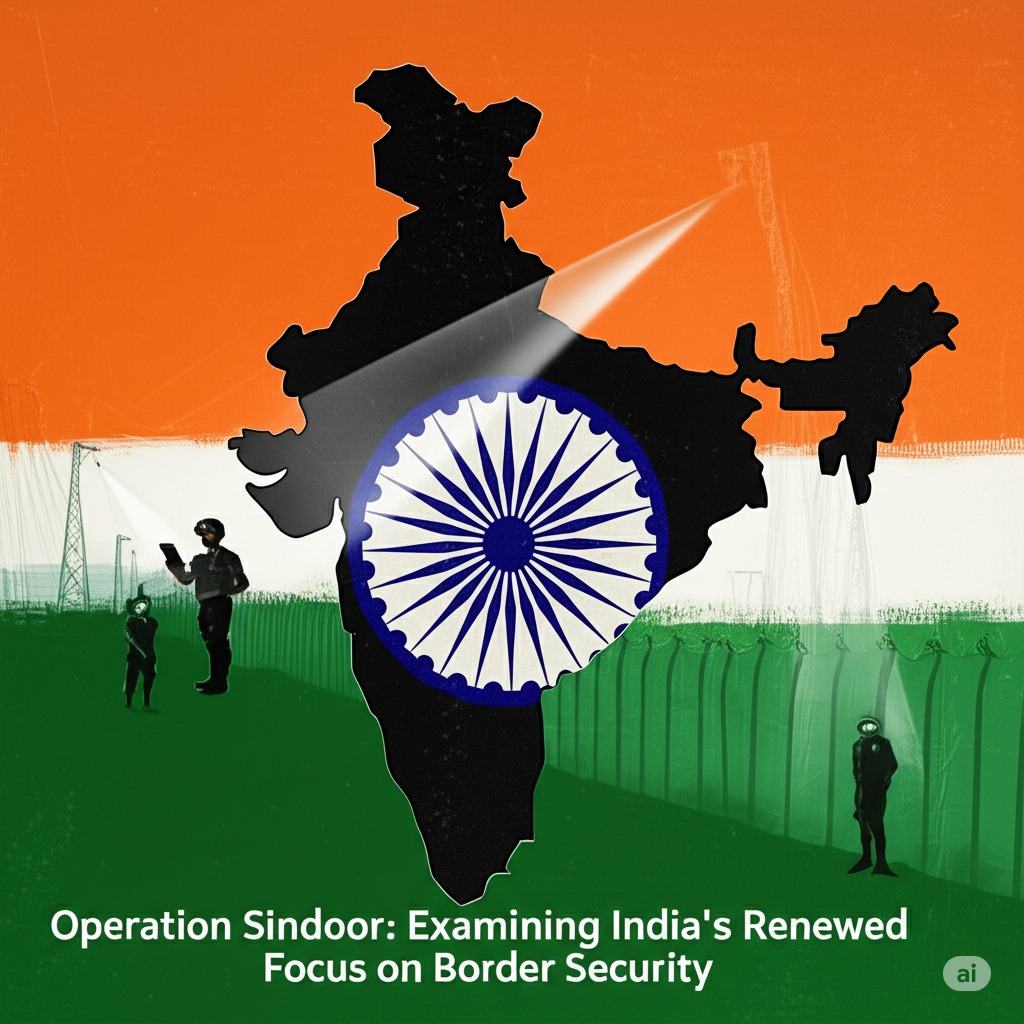Operation Sindoor: Examining India's Renewed Focus on Border Security
Published on May 16, 2024

Why It Matters
Reports and official allusions point to heightened security measures along India's northern and western borders, seemingly coalescing under the operational name 'Operation Sindoor'. While specific details remain limited, the increased activity appears to be a direct response to a recent uptick in cross-border infiltration attempts and drone-based illicit activities. The operation involves various components of India's security apparatus, including the Border Security Force (BSF), the Indian Army, and potentially intelligence agencies. Its significance lies in signalling a potentially more aggressive or consolidated approach to counter-infiltration and securing sensitive border areas against external threats.
Background & Timeline
The current focus, potentially codified as Operation Sindoor, follows a period of persistent security challenges along India's frontiers. For instance, recent months have seen numerous incidents of drone sightings and interceptions, suspected of being used for surveillance or transporting contraband and weapons. On April 15, 2024, a particularly concerning incident involved militants attempting to breach a border fence in the Jammu sector, resulting in a firefight. Earlier, in late March 2024, intelligence inputs highlighted potential regrouping efforts by militant outfits across the border. These events prompted a series of high-level security consultations within the Ministry of Home Affairs and the Ministry of Defence, leading to directives for enhanced vigilance and proactive measures along vulnerable stretches.
What’s Happening Now
- May 15, 2024: The Border Security Force chief stated during a press briefing that 'comprehensive measures' were being implemented to curb cross-border threats, without explicitly naming Operation Sindoor, but referencing increased force deployment and technological surveillance along 'sensitive sectors'.
- May 12, 2024: Local media outlets in Punjab reported increased movement of military convoys towards border areas, linking it speculatively to a new operational directive aimed at strengthening border defenses.
- May 10, 2024: The Ministry of Defence released a general statement affirming the nation's commitment to territorial integrity and the readiness of its forces to counter any external aggression or infiltration, understood by analysts as a backdrop statement for ongoing large-scale security efforts like Operation Sindoor.
- May 8, 2024: Sources indicated that internal security reviews had placed several northern states on high alert, advising state police forces to coordinate closely with central paramilitary units deployed for border management.
What Could Happen Next
-
1. Sustained, Low-Profile Counter-Infiltration Efforts: This scenario suggests Operation Sindoor will continue as a reinforced, standard counter-infiltration grid operation. Focus would remain on disrupting attempts through enhanced patrols, surveillance, and intelligence sharing, avoiding overt actions that could significantly escalate tensions. Success would be measured by a reduction in successful infiltration rates and drone incidents.
2. Targeted Response to Specific Threats: Operation Sindoor could evolve to include more proactive or targeted actions based on actionable intelligence. This might involve specific interdiction operations or addressing identified launch pads close to the border, potentially leading to limited, localized engagements. This carries a higher risk of prompting a reaction from across the border, requiring careful diplomatic management.
3. Integration with Broader National Security Posture: In this scenario, Operation Sindoor becomes a sustained, integral part of India's long-term border management strategy, potentially incorporating technological advancements like AI-powered surveillance and rapid response mechanisms. While enhancing security significantly, this requires substantial and consistent resource allocation and inter-agency coordination, making it a complex logistical undertaking.
This article is generated using AI-assisted summaries and verified timelines.
